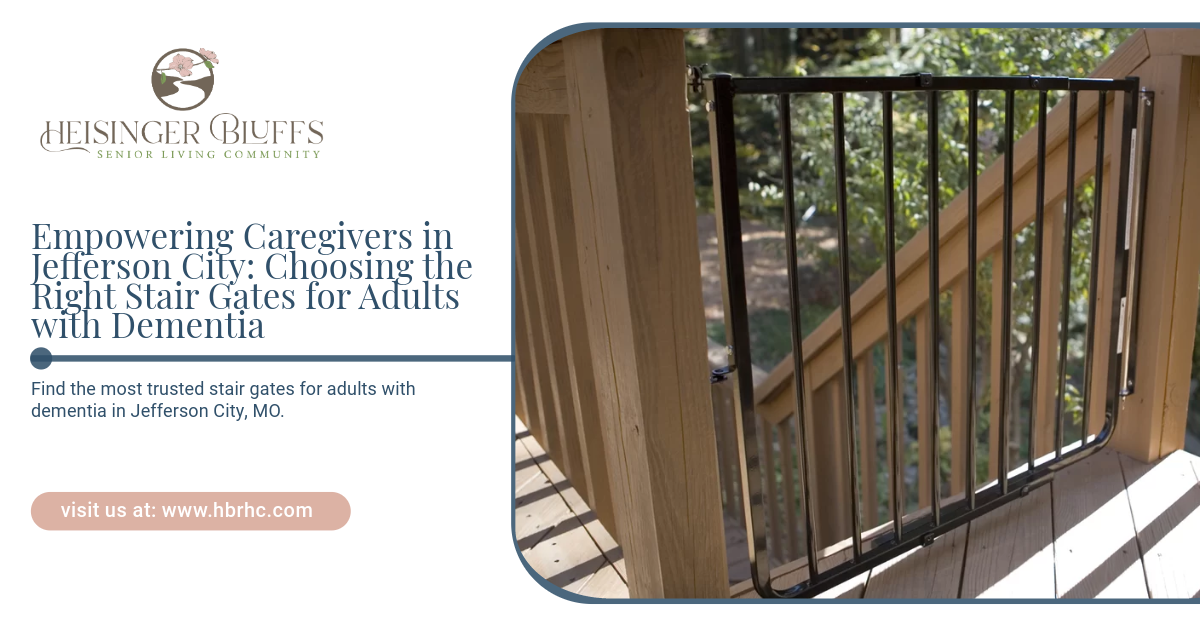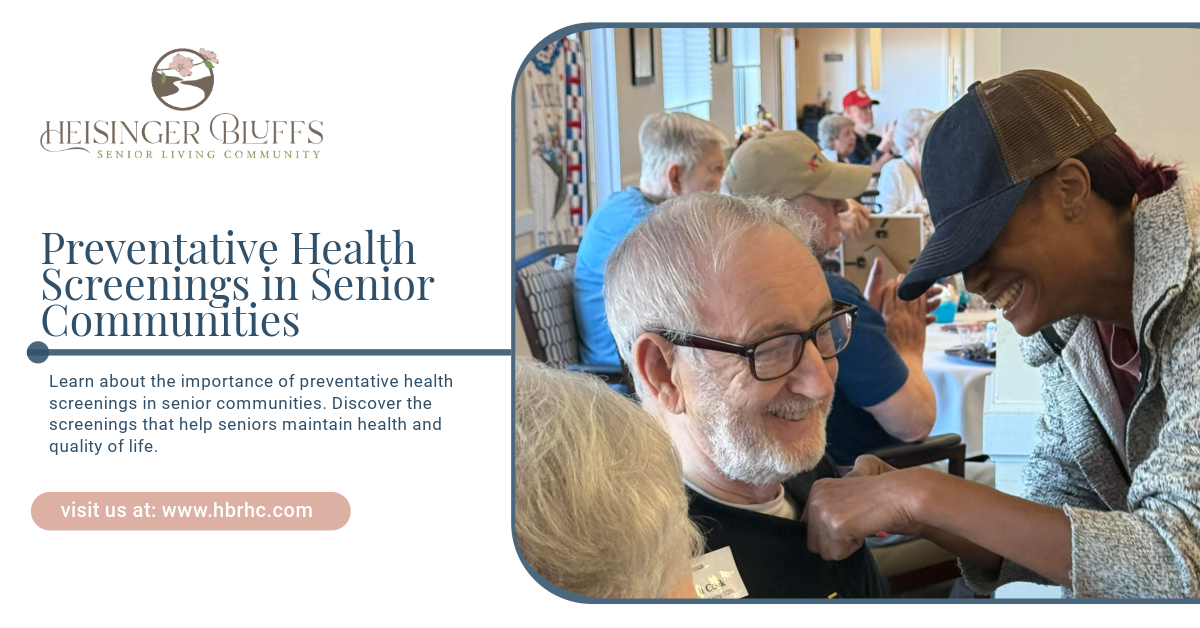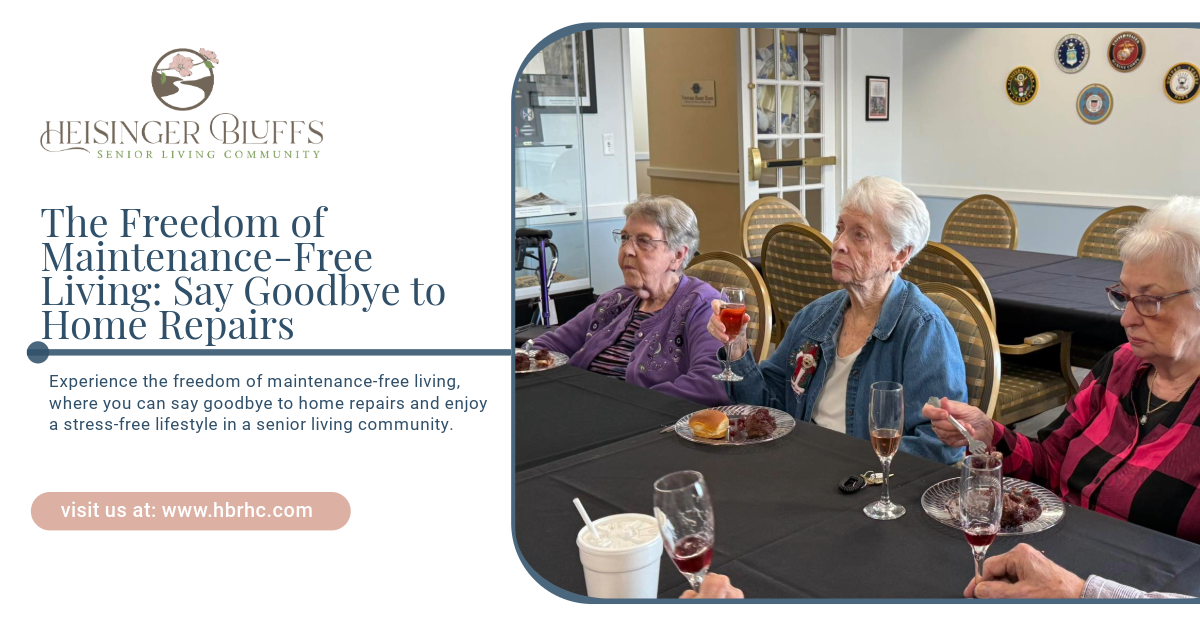Choosing the Right Stair Gates for Adults with Dementia in Jefferson City

Caring for a loved one with dementia comes with unique challenges, particularly when it comes to ensuring safety within the home. As dementia progresses, many individuals experience increased confusion and reduced mobility, which can elevate the risk of falls and accidents, particularly around staircases.
One effective solution for reducing this risk is the use of stair gates. These barriers can prevent individuals with dementia from accidentally wandering into unsafe areas. However, not all stair gates are created equal, and choosing the right one requires thoughtful consideration of specific factors.
In this blog, we’ll guide
caregivers in Jefferson City through the process of selecting the best stair gates for adults with dementia, covering essential features, installation tips, and additional safety strategies.
Understanding the Importance of Stair Gates for Dementia Care
Individuals living with dementia often experience cognitive decline that affects their spatial awareness and sense of danger. This makes staircases particularly hazardous. Unsteady footing, poor depth perception, or moments of confusion can quickly lead to dangerous falls.
Stair gates offer a simple but effective way to block access to staircases, minimizing the risk of injury. By creating safe, defined spaces in the home, caregivers can ensure that their loved ones move about more safely.
Why Use a Stair Gate for Adults with Dementia?
Stair gates are traditionally associated with young children, but they can also be a vital tool for seniors with dementia. These gates serve several important functions:
- Fall prevention: The primary purpose of a stair gate is to prevent falls, which are more common among individuals with mobility issues and cognitive decline.
- Wandering control: Some adults with dementia may wander or become disoriented. Stair gates can prevent them from accessing dangerous areas without supervision.
- Peace of mind for caregivers: Knowing that stairways are blocked provides caregivers with peace of mind, especially when they can't monitor their loved one’s every movement.
Key Factors to Consider When Choosing a Stair Gate
Choosing the right stair gate for an adult with dementia requires consideration of several key factors, including safety features, ease of use, and the specific needs of the individual. Here’s what to look for:
1. Height and Strength
Adults are stronger and taller than children, so it’s important to choose a gate that is both tall enough and strong enough to prevent the individual from trying to climb over or push through it. Standard baby gates are often not sufficient in these cases, so look for gates designed for adult use or heavy-duty models.
Recommended height: A gate that is at least 36 inches tall is a good choice for preventing climbing. If the individual is particularly mobile or active, consider a gate that is 42 inches tall or more.
2. Durability and Material
Stair gates come in a variety of materials, including wood, metal, and plastic. For adults with dementia, a sturdy and durable material like metal or reinforced wood is best. Ensure the gate is built to withstand wear and tear, as adults may lean or apply pressure to it.
3. Secure Locking Mechanism
A reliable locking mechanism is critical. Some adults with dementia may be able to manipulate simple latches or locks, so choose a gate with a secure, tamper-proof locking mechanism. Look for gates that require two hands or more complex motions to open, making it harder for the individual to bypass the gate on their own.
4. Ease of Use for Caregivers
While the gate should be secure for the individual with dementia, it should still be easy for caregivers to open and close. Look for a gate with a one-handed operation or a convenient walk-through design that allows you to pass through quickly while holding items or assisting your loved one.
5. Fixed vs. Pressure-Mounted Gates
There are two main types of stair gates: fixed gates that are mounted to the wall and pressure-mounted gates that rely on tension to stay in place.
For dementia care, fixed gates are usually the safer choice as they provide a more stable barrier that can’t be dislodged by leaning or pushing.
Pressure-mounted gates can be useful for temporary or portable solutions, but they may not provide the same level of security as a fixed gate, especially on stairs.
6. Gate Design and Appearance
While safety is the primary concern, consider how the gate’s design will fit into your home environment. Some gates have a more institutional look, while others are designed to blend seamlessly with home décor. If possible, choose a gate that is both functional and visually appealing to maintain a comfortable atmosphere.
Top Stair Gates for Adults with Dementia: Recommendations
When shopping for a stair gate, here are some highly recommended models that meet the safety and durability needs of adults with dementia:
1. Regalo Extra Tall Safety Gate
This gate is a sturdy, metal model designed for both children and pets, but its extra-tall height (41 inches) and pressure-mounted design make it suitable for adults. It includes a secure locking mechanism and is easy for caregivers to open with one hand.
2. Cardinal Gates Auto-Lock Safety Gate
The Cardinal Gates model is wall-mounted, making it one of the most secure options available. It’s designed with a two-step latch system that’s difficult for adults with dementia to manipulate, but it allows for quick opening by caregivers.
3. Dreambaby Chelsea Extra Tall and Wide Gate
This gate offers a combination of height (39 inches) and width, making it suitable for larger stairways. It has a pressure-mounted system but includes hardware for added security if needed. The easy one-hand release makes it ideal for caregivers.
Installing and Using Stair Gates Effectively
Once you’ve chosen the right stair gate, it’s important to install and use it correctly to ensure maximum safety. Here are a few tips for effective use:
1. Place Gates at Both Ends of the Staircase
For full protection, install gates at both the top and bottom of staircases. This ensures that your loved one cannot access the stairs from either direction.
2. Make Sure the Gate Is Securely Mounted
If using a fixed gate, ensure that it’s properly mounted to the wall or banister. Follow the manufacturer’s instructions carefully and consider hiring a professional if you’re unsure about installation.
3. Regularly Check the Gate’s Condition
Over time, wear and tear can affect the gate’s stability and locking mechanism. Regularly inspect the gate to ensure it remains secure and in good working condition.
4. Monitor the Individual’s Interaction with the Gate
Some adults with dementia may try to bypass the gate by climbing over it or manipulating the lock. Keep an eye on how your loved one interacts with the gate, and if necessary, make adjustments to the gate’s height or locking system.
Additional Safety Tips for Homes with Dementia
While stair gates are an important tool for dementia care, they are just one part of a comprehensive home safety plan. Here are a few more strategies to ensure a safe living environment for your loved one:
- Install handrails: Ensure that all staircases have sturdy handrails on both sides to provide extra support.
- Use non-slip mats: Place non-slip mats at the top and bottom of stairs to prevent slipping.
- Remove tripping hazards: Clear pathways of rugs, cords, and clutter that could cause trips and falls.
- Utilize motion sensors: Motion-sensor lights can help illuminate dark areas and prevent falls at night.
- Secure sharp objects: Keep sharp or hazardous items out of reach in drawers with child-proof locks.
Conclusion
Selecting the right stair gate for an adult with dementia is a critical step in creating a safer home environment. By considering factors such as height, strength, locking mechanisms, and ease of use, caregivers can make informed decisions that provide peace of mind and protect their loved ones from preventable falls.
At Heisinger Bluffs, we understand the unique challenges caregivers face when caring for a loved one with dementia. We are committed to providing support and resources to help families create safe, comfortable living environments for their loved ones. If you need more advice on senior care, feel free to reach out to us for assistance.
Frequently Asked Questions
Can adults with dementia easily bypass stair gates?
Most stair gates designed for dementia care come with complex locking mechanisms that are difficult for individuals with cognitive decline to operate. Always choose a gate with a secure lock to minimize the risk of tampering.
Are pressure-mounted gates safe for dementia care?
While pressure-mounted gates can be useful, they may not provide the same level of stability as fixed gates. For adults with dementia, it’s often safer to use wall-mounted gates to prevent them from being dislodged.
What is the ideal height for a stair gate for adults?
For adults with dementia, it’s recommended to use a gate that is at least 36 inches tall. If the individual is mobile or has a tendency to climb, consider using a gate that is 42 inches tall or more for added security.
Sources:
- https://www.alz.org/alzheimers-dementia/what-is-dementia
- https://forum.alzheimers.org.uk/threads/stair-gates.104805/
- https://cardinalgates.com/
- https://pmc.ncbi.nlm.nih.gov/articles/PMC8408671/
- https://pmc.ncbi.nlm.nih.gov/articles/PMC4822719/











